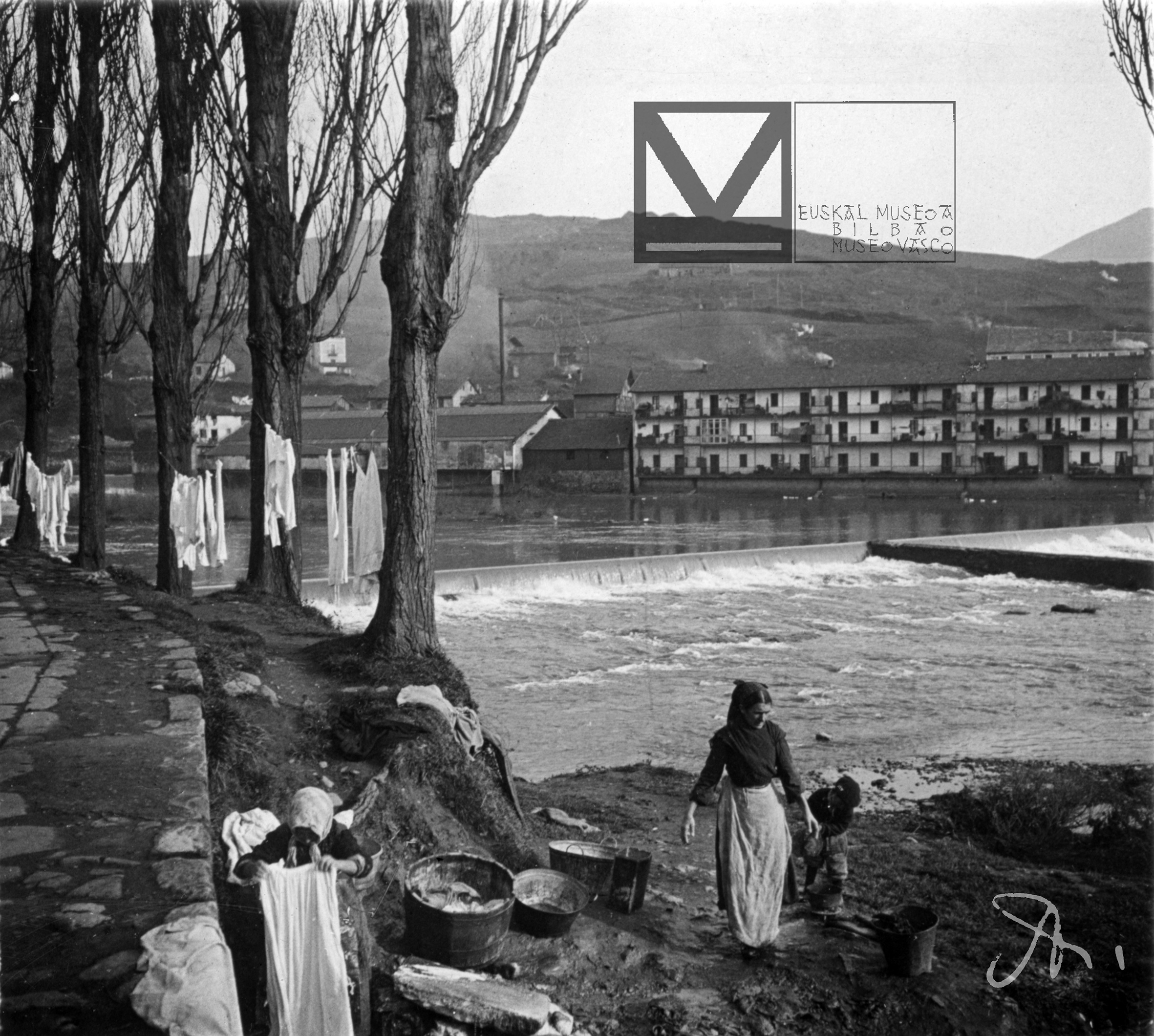Basque ethnography at a glance

Photograph by Eulalia Abaitua (ABA–00834). Courtesy of Euskal Museoa Bilbao Basque Museum.
I welcome the invitation extended to me by Segundo Oar-Arteta to present Basque photographer Eulalia Abaitua (Bilbao, 1853–1943) to the readers of this blog.
You may or may not know her. Be that as it may, these words will hopefully help further disseminate the contribution she made through her photographs, taken between the end of the 19th and beginning of the 20th centuries.
Born into a middle-class family established in Bilbao, and much attached to the neighbourhood of Begoña, she was a wife, a mother, a widow, a grandmother… but above all a great photographer, the first in the history of the Basque Country, with an archive of 2500 photographic records preserved at Bilbao Basque Museum.
It shall be sufficient to display a single photograph, for you may know by a handful the whole sack. Laundresses on Los Caños Promenade could be its title, but the author did not entitle it. The black-and-white stereoscopic glass plate positive (4.5 cm in width, 10.7 cm in height) is coated with gelatino-bromide emulsion.
We find ourselves on the outskirts of Bilbao, specifically on Los Caños Promenade, a pleasant walk leaving from Atxuri upstream along the riverbank towards Miraflores in the neighbourhood of La Peña. Emiliano de Arriaga (Lexicón, 1896) dedicates several pages to this place, describing its geography, history, anecdotes, architecture, transport, people… As he puts it, it was “a delightful, picturesque, poetic promenade”, yet his attention is caught by “the enormous facade of a new rambling building on the opposite riverside, with one hundred and thirteen openings, which houses a convent, a military station, a factory and multiple dwellings, and is neither this nor that nor the other” but entirely out of place with the surroundings.
We do recognize in the photograph the mentioned facade and its one hundred and thirteen openings in the building on the left bank of the river, facing the waters. Arriaga does not breathe a word about the laundresses, none at all. Abaitua, however, makes these women and their hard work visible. Curiously enough, she photographed them on the steep bank, and again further up by Pontón Mill (see Abaitua, Gure Aurreko Andrak – Basque Women of Yesteryear, 1990, photograph 28).
Another four photographs by her illustrate this very spot: ABA–00730, detail of two laundresses who appear in ABA–00028; ABA–00833, landscape image which includes no people and reveals, on the left, the old Pontón flour factory mill, Vildósola and Sons, and the then newly built bridge in La Peña for the Durango tramway, work of the engineer Gabriel Rebollo, measuring 178 metres in length, and the first concrete building erected between 1901 and 1904; ABA–00835 and ABA–00836 refer to the abundant woodland, green slopes and walkways.
But let us pick up the thread again. Thanks to Abaitua we are able to combine Arriaga’s narrative with her photographs to get a more adequate idea of what a washing place looked like in 1900s Bilbao. Early in 1890 plans were afoot for a communal washing place at the start of Los Caños Promenade but ultimately fell through two years later when the Tramway Company operating the tramline between Bilbao and Durango requested part of the site as tramway land (Historical Archive of the Government of Bizkaia, Municipal, Bilbao cuarta 0070/004 and Bilbao cuarta 0129/008).
We could examine the photograph a little closer and thus rescue these humble laundresses from oblivion to learn about the way they dressed, the vessels they used, and the environment they worked in. They were hired by the local moneyed bourgeoisie, without the protection of a union, to do laundry on the washing stones, on their knees, in the open air, using the water from the river, to soap up, rub up and rinse; then they hung the clothes and linen to dry in the sunshine, on the lines we see tied to the poplars, perhaps black poplars, bared by the winter when the photograph was taken, later removed them and took them for pressing. Laundresses disappeared over time, and their knowledge went with them. All that precious knowledge!
On the left-hand side of the picture, right next to the stone-paved walkway and covered with huge slabs, we discern the canals or pipelines (caños) for conveying water from the river at Pontón to the former city reservoir located on the site where Kutxabank now stands, between Ronda and Zabalbide Streets.
Those were other times Eulalia Abaitua illustrates, and although hers may seem to be a biased view, there are lessons to be learned from her portraits of people and landscapes of yesteryears.
Maite Jiménez Ochoa de Alda – Technician at Euskal Museoa Bilbao Basque Museum
Translated by Jaione Bilbao – Ethnography Department – Labayru Fundazioa

